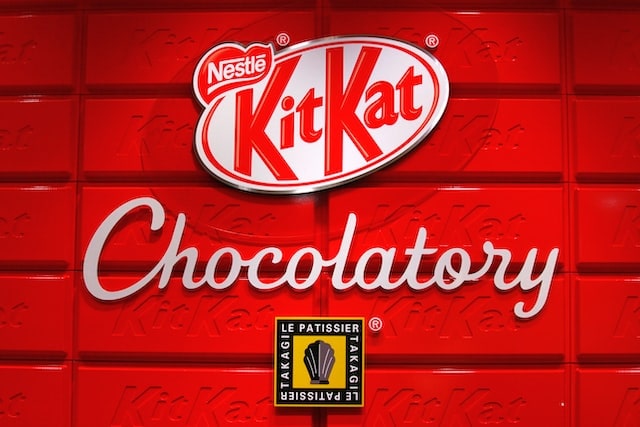The Marketing Mix of Nestle tells the 4ps (Product, Price, Place, and Promotion) of the Swiss multinational food and drink processing conglomerate corporation – Nestle!
Nestle, the world’s largest food company by revenue, is headquartered in Vaud, Switzerland. It offers a wide variety of products, including dairy products, Maggi, coffee, tea, and baby foods.
Henry Nestle founded it in 1866, and Nestle was created in 1905 as a result of a partnership with the Anglo-Swiss Milk Company. The company has so far completed numerous mergers and acquisitions that have increased both its customer base and market visibility.
The 4Ps of one of the most successful FMCG firms in the world are discussed in the Nestle marketing mix. The Nestle marketing mix demonstrates that the company has a robust product line, which strengthens its marketing mix.
Let’s start with the Marketing Mix of Nestle to learn more about their product, price, promotion, and distribution approaches.
Products in the Marketing mix of Nestle
The largest food corporation in the world is Nestle. The foundation of its marketing mix product strategy is made up of almost 8,000 brands that offer a wide range of products on the market. But primarily it focuses on below products:-
Dairy products- Numerous milk products, including Nestle milk, Nestle slim, and Nestle every day, have been introduced.
Ready to Cook foods- Along with various prepared foods, Nestle has also developed products that simplify cooking, such as Maggi Instant Noodles. One of Nestle’s most popular ready-to-cook noodle products, Maggi, has grown into a brand unto itself with a variety of products including Maggi Pasta, Maggi sauce, and many others.
Chocolates- The chocolate industry is one of Nestle’s most thriving sectors. It sells well-known goods like Munch, Éclairs, Milky Bar, KitKat, and Polo. Alpino chocolate has also been developed to cater to the gifting market.

Beverages- Nescafe, one of the most well-known coffee brands, is owned by Nestle and is a major source of revenue for the company.
Price in the Marketing mix of Nestle
You can find on the market that products from competing companies are less priced than Nestle products from the same category. Consider the case of Maggi. When compared to other brands of instant noodles, its pricing is a little bit higher.
The buyer can simply pay a little more money to get a better quality because the product’s perceived value is considerably better. You can often find things in a range of sizes and prices.
Due to their position as market leaders, Nescafe and Maggi are priced higher than their competitors. This is so that consumers won’t switch brands because the product quality is acceptable and a small price cut.
To cater to varied customers, Nestle’s pricing strategy component includes the introduction of numerous SKUs (Stock Keeping Units) at varying price points. You can serve a big customer base with this. We can see that they provide group discounts at several retailers, including Walmart, Tesco, and others.
They use a strategy of competitive pricing in the chocolate industry. Prices are almost comparable to those for Cadbury’s products. As a result, Nestle’s pricing strategy in its marketing mix depends on factors such as the competition, the quality of its products, the areas it serves, etc.
Place in the Marketing mix of Nestle
Europe accounts for the majority of Nestle’s sales and revenue. It accounts for roughly 90% of overall sales. They typically distribute through an FMCG/CPG channel.
Additionally, the bulb needs to be broken. Bulk products leave the factory and are delivered to C&F. These goods are stored in a kind of warehouse. It is then transmitted to distributors, who subsequently sent it to stores. Consumers can now purchase the products from shops.
To keep these distribution channels busy, they do come up with discounts and strategies. Nescafe and Maggi are the two items that are in high demand. They can move their other merchandise easily using these two products. As a result, if a distributor purchases some weaker products, they can easily obtain discounts on stronger products.
Nestle faces a hurdle in the chocolate market because Cadbury presents strong competition, making it challenging to sell chocolates. Despite having a unique brand positioning, Kitkat is not superior to dairy milk.
The biggest challenge for Nestle is convincing shops to sell Nestle rather than Cadbury. This is primarily converted through promotions.
Promotions in the Marketing mix of Nestle
When Nestle has to brand their products, they always have some interesting marketing concepts. Comprehensive advertising and marketing for each of Nestle’s unique brands and products is the focus of the company’s overall marketing mix promotional strategy.

When Nescafe first entered the market, they introduced Nescafe songs, which are now well-known. They have always made an effort to promote their brands to customers. Take Maggi, which people often identify as a quick snack that can be made by mothers in under two minutes.
Due to this, it became extremely well-known among mothers and children. They have always placed a premium on the products’ quality and nutritional content.
Maggi and Nescafe have been pushing sales and marketing because of their strong ground-level presence. It has continuously used an above-the-line marketing approach. It differentiates itself from its competitors because of its broad range of products.
Nestle’s clear marketing phrase, “Have a Break, Have a KitKat,” has come to be associated with the very well-known Nestle brand Kitkat. For its marketing strategy, Nestle employs a variety of media, including TV, billboards, print, and online advertisements.
Along with this, Nestle often invests in ATL and TVC marketing. It is also accessible online due to some smart creativity. Overall, Nestle is a brand with strong products and marketing, which contributes to the company’s high brand recall value.
I hope you have gathered all the crucial information about the Marketing Mix of Nestle and the 4 P’s of Nestle. Stay tuned for more Marketing Mix Articles.
